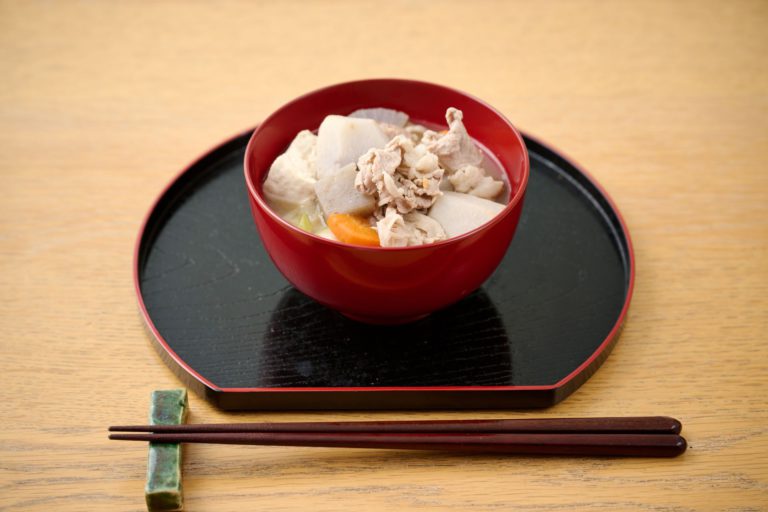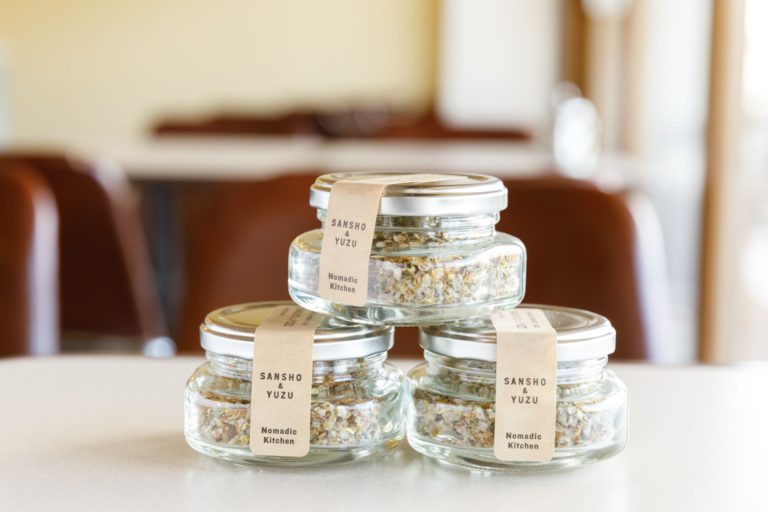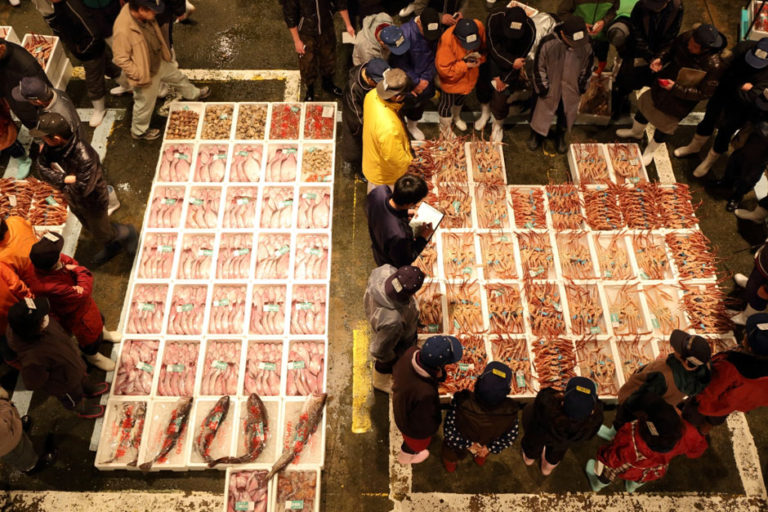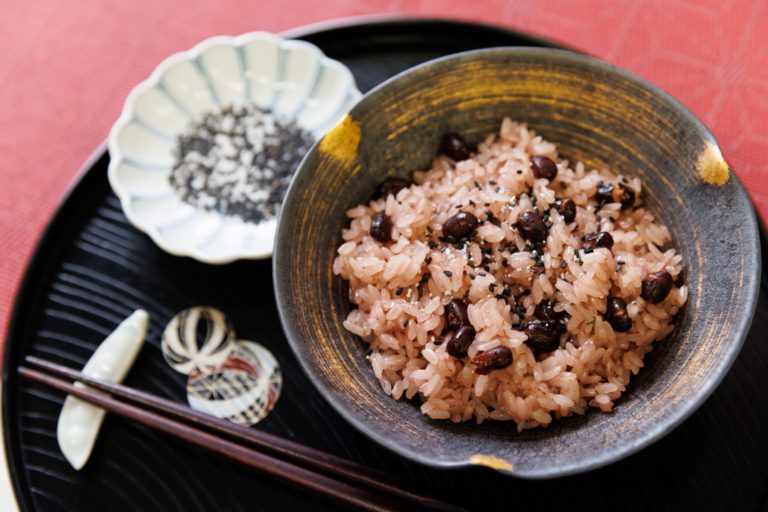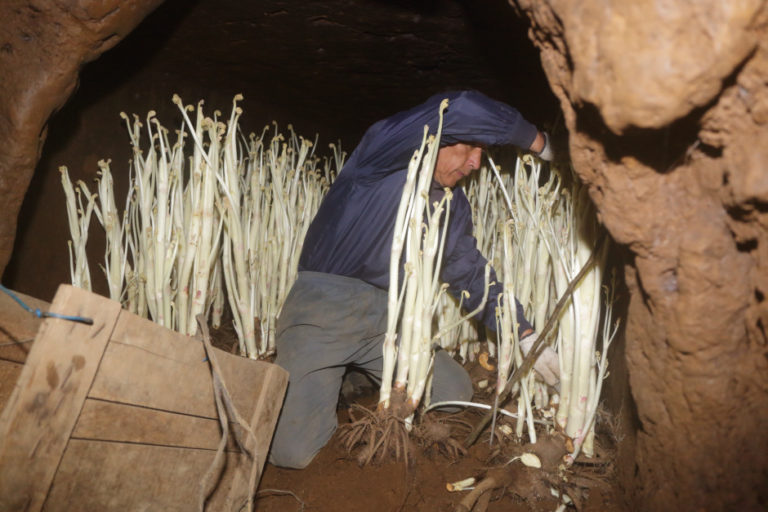Imoni, Tohoku’s Autumn Tradition
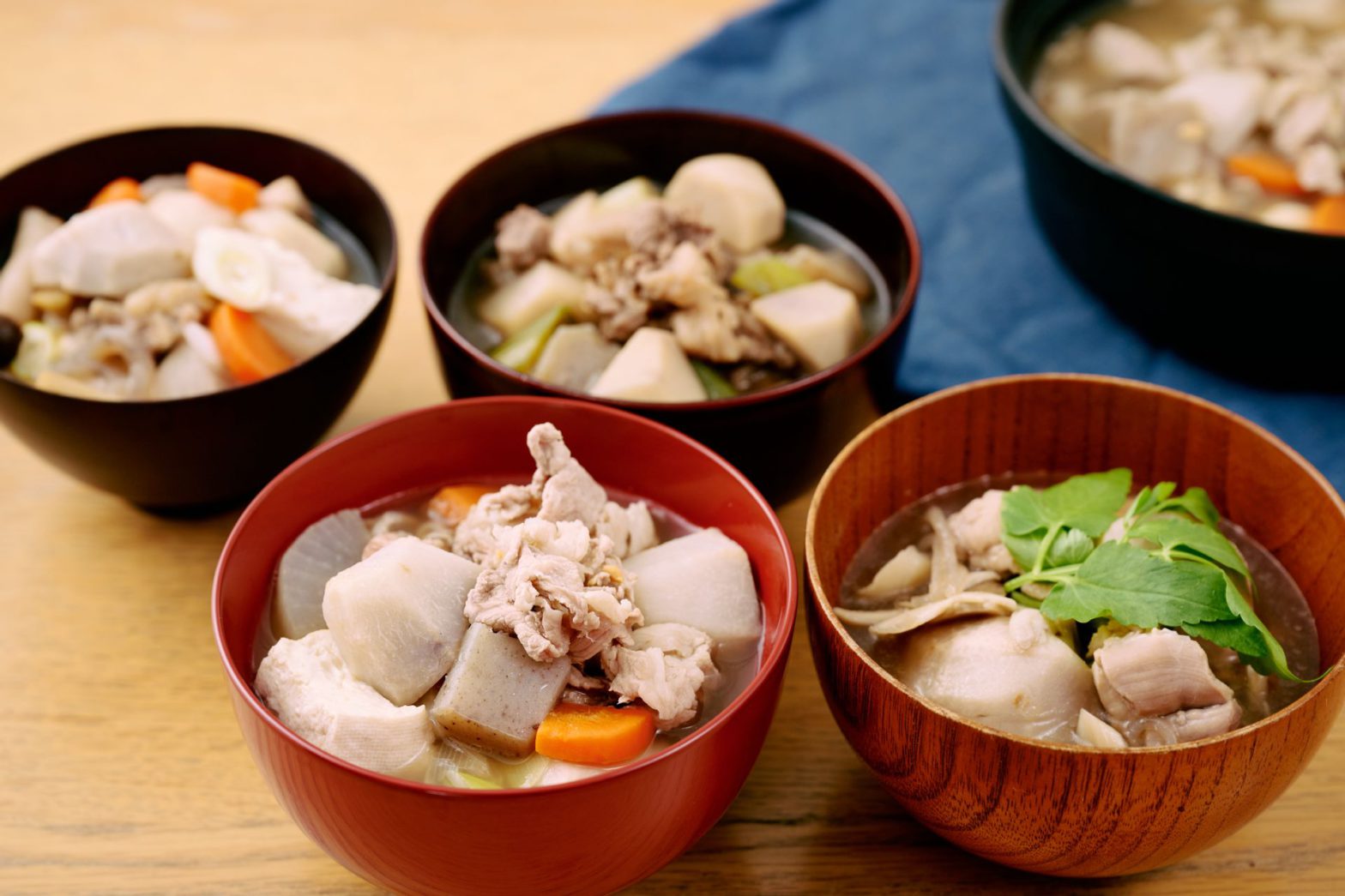
Taro, a food for celebrations
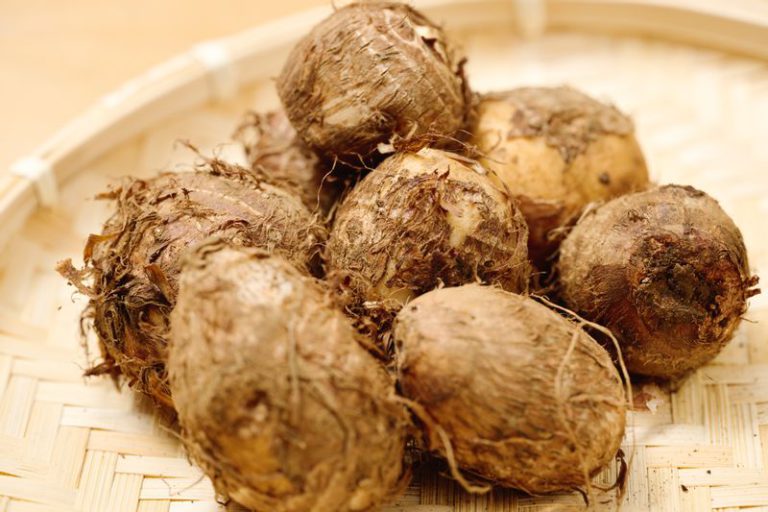
Taro has a long history and is believed to have been introduced to Japan earlier than rice. Since antiquity, it has been an essential ingredient in celebratory meals throughout Japan, used in zoni and osechi dishes. Jugoya (fifteenth night/harvest moon) is also known as “taro meigetsu,” and taro is served as an offering. It is considered to bring good luck because it represents fertility, since it produces numerous tuber offshoots. Taro, an ingredient used for special occasions, is part of an autumn tradition in the Tohoku region.
Imoni party, a classic autumn event
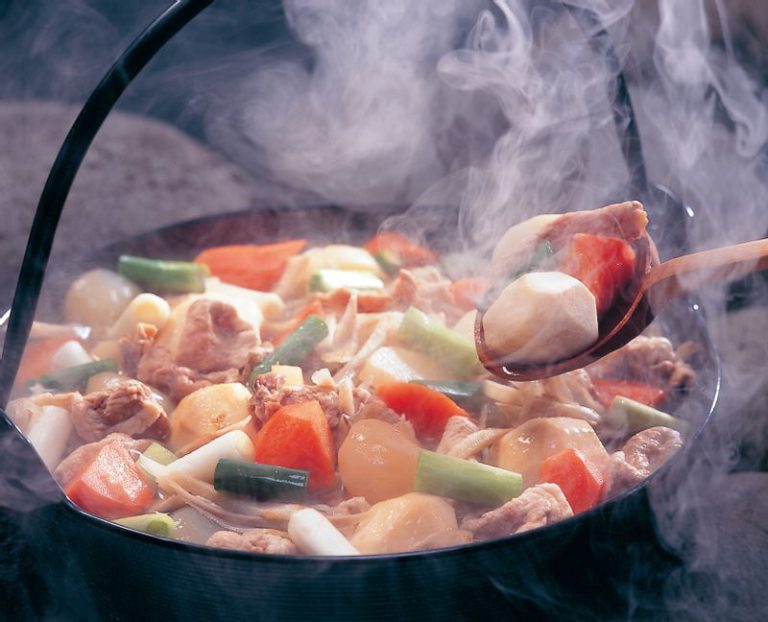
The imoni party season arrives between September and November, when the temperature usually begins to cool. Entire cities in Tohoku are in the mood for imoni parties, with supermarkets in Tohoku selling ingredients for imoni, renting out large pots, and convenience stores selling firewood for the event. In addition to being enjoyed by family, friends, and co-workers gathered outdoors, imoni parties have become an annual event, held in conjunction with sports days and other community events.
Yamagata's imoni with soy sauce and beef, and Miyagi's imoni with miso and pork.
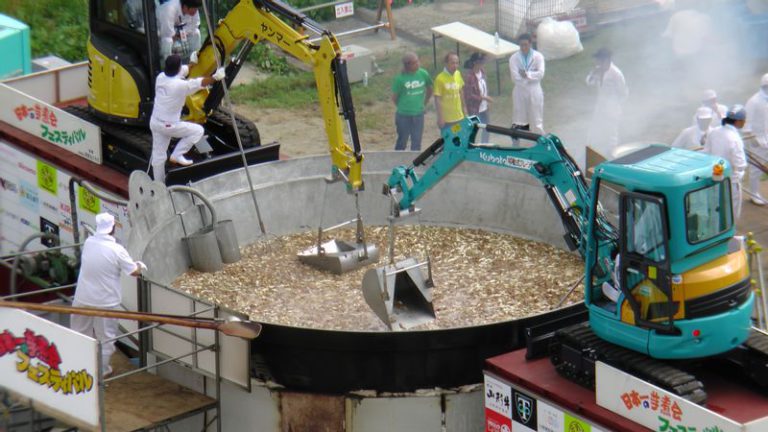
The most frequently disputed points of imoni are the ingredients and seasoning. In general, Yamagata’s imoni is seasoned with soy sauce and contains beef, while in Miyagi, it is seasoned with miso and contains pork. When people from Yamagata and Miyagi get together, they often make their versions of imoni and compare their tastes.
Imoni parties are becoming popular not only as an event for small groups of family, friends, and acquaintances but also as a tourist attraction. Large-scale events like the Nippon Ichi no Imoni Festival, which features a crane truck, are now being held and drawing much attention.
Iwate and Akita's imonoko-jiru
Another local dish that uses taro, called imonoko-jiru, is enjoyed in Iwate and Akita prefectures. Imonoko means taro. Like imoni, it is commonly served at events and gatherings, seasoned with soy sauce or miso, and usually made with chicken. At elementary and middle schools in Akita Prefecture, a “nabekko ensoku,” in which children transport ingredients and cooking utensils and make imonoko-jiru outdoors, is also common.
Replicating each region's imoni
There are many seasoning and ingredient variations depending on the region and household. The editorial staff at SHUN GATE has replicated imoni from various regions using typical ingredients. Let us introduce them to you.
Miyagi's imoni
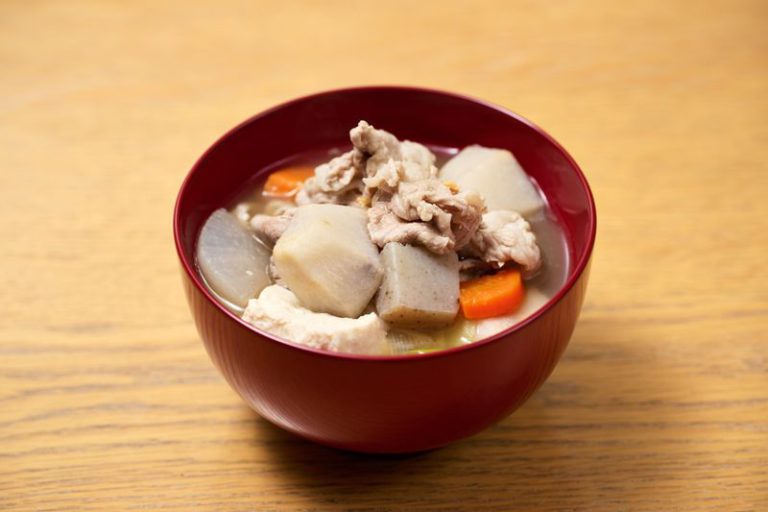
In addition to taro, pork, and konjac, Miyagi’s imoni is often packed with many vegetables. You can add carrots, burdock root, daikon radish, green onion, as desired. The taste resembles pork miso soup, as miso is used. It is a hearty dish with many ingredients, so it can be a meal in itself.
Yamagata's imoni
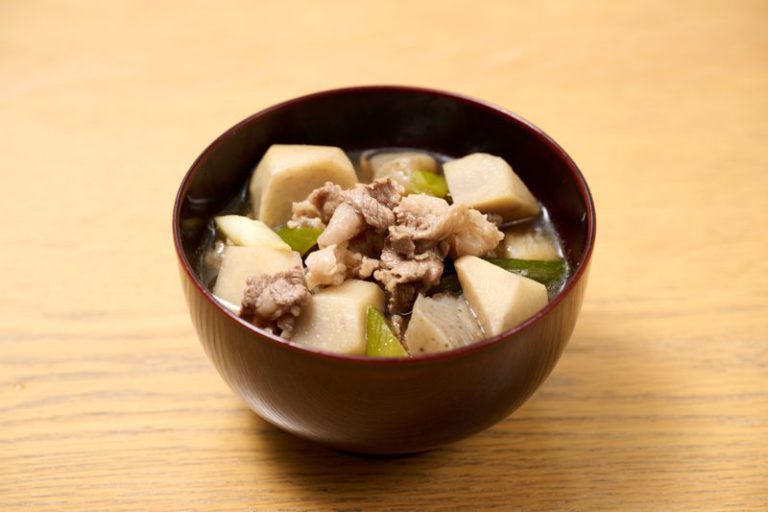
Yamagata’s imoni, often compared to Miyagi’s imoni, is a soy sauce-based hot pot with beef. It basically consists of taro, beef, konjac, and green onions. It has a full-bodied flavor and is delicious as an imoni curry, with curry roux added at the end of the meal. It also varies between the inland region and the Sea of Japan side. Beef and soy sauce are used mainly in the inland Murayama region, while pork and miso are used in the Shonai region on the Sea of Japan.
Ref: Our Regional Cuisines “Imoni (taro soup), Yamagata Prefecture”
https://www.maff.go.jp/j/keikaku/syokubunka/k_ryouri/search_menu/menu/imoni_yamagata.html
Iwate's imonoko-jiru
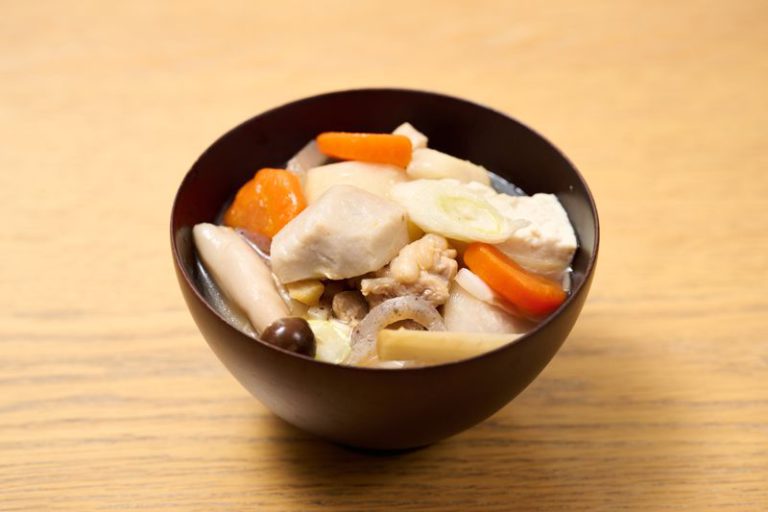
Iwate’s Imonoko-jiru is primarily made with taro, chicken, tofu, and root vegetables such as daikon radish, carrots, and burdock root. It is seasoned with a soy sauce-based dashi. It has a lighter flavor compared to Yamagata and Miyagi.
Ref: Our Regional Cuisines “Imonoko-jiru, Iwate Prefecture”
https://www.maff.go.jp/j/keikaku/syokubunka/k_ryouri/search_menu/menu/28_13_iwate.html
Akita's imonoko-jiru
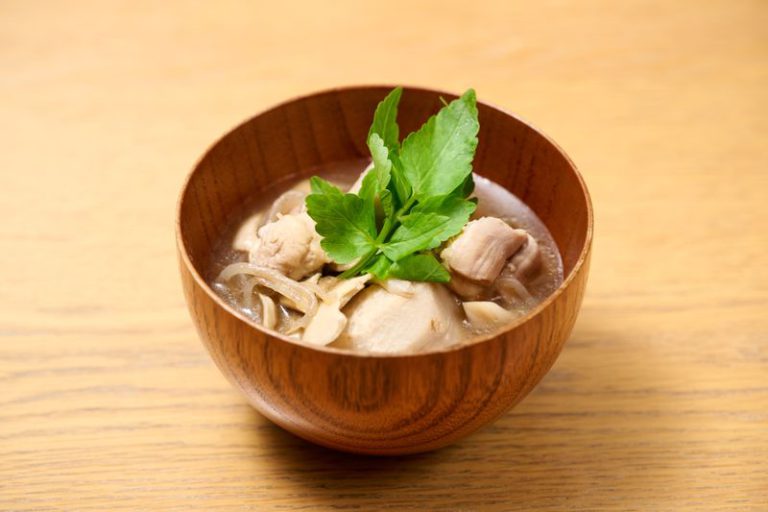
Akita’s imonoko-jiru is made with taro, chicken, konjac noodles, mushrooms, and water celery. It is either seasoned with miso or soy sauce. Along with kiritanpo, it is a dish that warms the body in Akita during the cold season.
Ref: Our Regional Cuisines “Imonoko-jiru, Akita Prefecture”
https://www.maff.go.jp/j/keikaku/syokubunka/k_ryouri/search_menu/menu/29_7_akita.html
Imoni and imonoko-jiru are the soul food of the Tohoku region, richly flavored with autumn produce. How about trying to make them at home?

